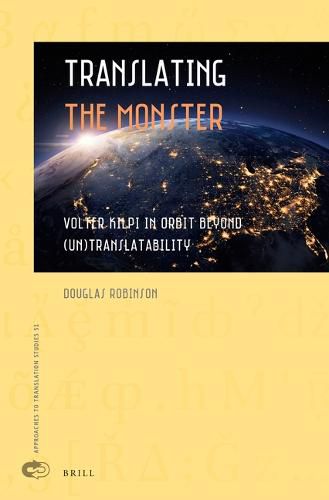Readings Newsletter
Become a Readings Member to make your shopping experience even easier.
Sign in or sign up for free!
You’re not far away from qualifying for FREE standard shipping within Australia
You’ve qualified for FREE standard shipping within Australia
The cart is loading…






One of the hottest battles emerging out of the theoretical and methodological collisions between Comparative Literature and Translation Studies-especially on the battleground of World Literature-has to do with translatability and untranslatability. Is any translation of a great work of literature not only a lamentable betrayal but an impossibility? Or is translation an imperfect but invaluable tool for the transmission of works and ideas beyond language barriers?
Both views are defensible; indeed both are arguably commonsensical. What Douglas Robinson argues in Translating the Monster, however, is that both are gross oversimplifications of a complex situation that he calls on Jacques Derrida to characterize as "the monster."
The Finnish novelist Robinson takes as his case study for that monstrous rethinking is Volter Kilpi (1874-1939), regarded by scholars of Finnish literature as Finland's second world-class writer-the first being Aleksis Kivi (1834-1872). Kilpi's modernist experiments of the 1930s, especially his so-called Archipelago series, beginning with his masterpiece, In the Alastalo Parlor (1933), were forgotten and neglected for a half century, due to the extreme difficulty of his narrative style: he reinvents the Finnish language, to the extent that many Finns say it is like reading a foreign language (and one contemporary critic called it the "Mesopotamian language ... of a half-wit"). That novel has been translated exactly twice, into Swedish and German. Translating the Monster also gives the English-speaking reader an extended taste of the novel in English-en route to a series of reframings of the novel as allegories of translation and world literature.
$9.00 standard shipping within Australia
FREE standard shipping within Australia for orders over $100.00
Express & International shipping calculated at checkout
One of the hottest battles emerging out of the theoretical and methodological collisions between Comparative Literature and Translation Studies-especially on the battleground of World Literature-has to do with translatability and untranslatability. Is any translation of a great work of literature not only a lamentable betrayal but an impossibility? Or is translation an imperfect but invaluable tool for the transmission of works and ideas beyond language barriers?
Both views are defensible; indeed both are arguably commonsensical. What Douglas Robinson argues in Translating the Monster, however, is that both are gross oversimplifications of a complex situation that he calls on Jacques Derrida to characterize as "the monster."
The Finnish novelist Robinson takes as his case study for that monstrous rethinking is Volter Kilpi (1874-1939), regarded by scholars of Finnish literature as Finland's second world-class writer-the first being Aleksis Kivi (1834-1872). Kilpi's modernist experiments of the 1930s, especially his so-called Archipelago series, beginning with his masterpiece, In the Alastalo Parlor (1933), were forgotten and neglected for a half century, due to the extreme difficulty of his narrative style: he reinvents the Finnish language, to the extent that many Finns say it is like reading a foreign language (and one contemporary critic called it the "Mesopotamian language ... of a half-wit"). That novel has been translated exactly twice, into Swedish and German. Translating the Monster also gives the English-speaking reader an extended taste of the novel in English-en route to a series of reframings of the novel as allegories of translation and world literature.